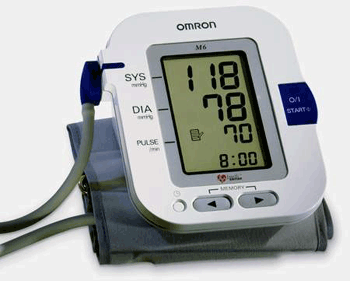
Fluctuations of either side of the normal ranges for one’s blood pressure can cause issues for most people.
Low blood pressure may be desirable for some individuals but a very low pressure can cause severe and even life-threatening symptoms.
On the other hand, a high blood pressure might not cause any signs or symptoms in most people but it can lead to long-term damage to blood vessels and the organs where the blood is supplied to, such as the heart and kidneys, and this can lead to long-term complications such as cardiac and renal failure, respectively.
A very high blood pressure over a reasonable period of time may lead to issues such as weakening in the arterial walls leading to aneurysms that can tear and cause the individual to bleed out or lead to bleeding in an area such as the brain which can lead to damage to the organ or death.
Low Blood Pressure
Also referred to as hypotension, low blood pressure is associated with a systolic pressure lower than 90 millimeters mercury (mmHg) or a diastolic pressure of lower than 60mmHg. Some people may have readings lower than this and not display any symptoms and this is characterized as a normal pressure in these individuals. Therefore, they will not require any further treatment for the lower than normal blood pressure.
Acute causes of hypotension can be caused by medical issues such as dehydration, blood loss, or poor circulation and this can result in the following possible signs and symptoms:
- Fainting
- Dizziness
- Lightheadedness
- Fatigue
- Blurred vision
- Nausea
- Difficulty in concentrating
If the hypotension is sudden and severe then the patient is regarded as being in shock and may present with issues such as:
- Severe confusion, especially in elderly individuals
- Having a cold, pale, and clammy skin
- Shallow and rapid breathing
- Rapid and weak pulses
High Blood Pressure

High blood pressure (hypertension) is currently defined by the American Heart Association as a persistent blood pressure of above 130mmHg systolic and/or 80mmHg diastolic. A human’s blood pressure is determined by both the amount of blood the heart pumps and the amount of resistance to blood flow in the arteries. Therefore, medical conditions that increase the amount of blood pumped throughout the body and cause arterial vessels to narrow will result in hypertension.
Affected individuals will have an elevated blood pressure for years without experiencing any signs or symptoms of the disorder. As the blood pressure continues to remain high, it will carry on damaging blood vessels and organs and this is the reason why hypertension is referred to as a ‘silent killer’.
Even if blood pressure levels reach dangerously high levels, affected individuals may still not experience any signs or symptoms of the condition. However, some patients may complain of problems such as:
- Headaches that don’t improve with pain medications
- Shortness of breath
- Nosebleeds that take long to control or continue for longer than usual periods of time
It is important to take note that these issues can occur with any other medical condition so are not specific to hypertension. They will also not necessarily occur until the patient’s blood pressure has reached a severe or life-threatening stage. For help visit websites like Xpertdox.com where one can find doctors and hospitals that specialize in the treatment and management of conditions such as low and high blood pressure.
The site contains comprehensive information about healthcare professionals and medical facilities that are locally available to the person performing the search.

Leave a Reply